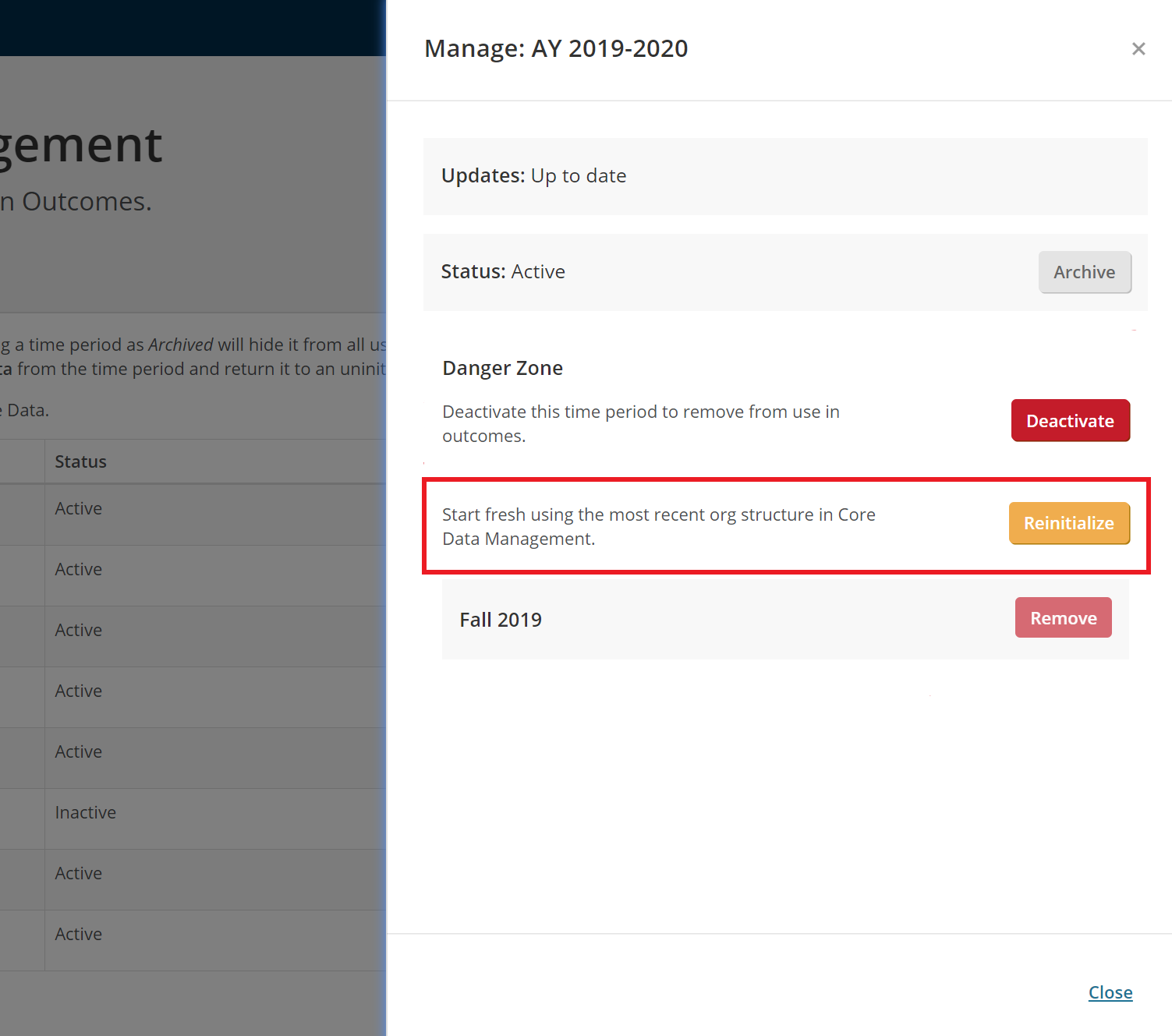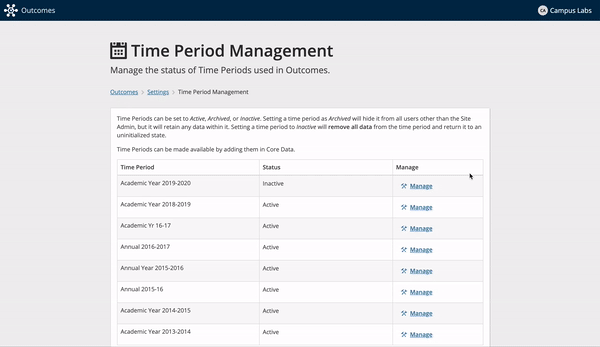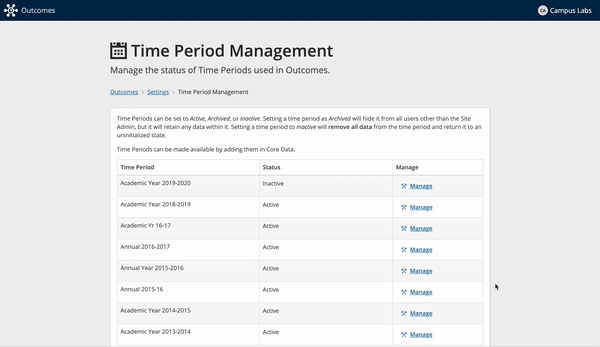Editing and Removing Terms and Time Periods
Only site administrators have the ability to edit and remove terms. To activate a new Academic Year, refer to Initializing a New Time Period.
Note
Time Periods in Outcomes rely on Academic Terms Files added to Core Data Management.
Updating Time Periods and Terms
If you have used Data Management to add new Terms to an existing Academic Year, or if you have changed the Name of a Term or Year, you can apply these changes to Outcomes.
After the updated file has been uploaded in Data Management, go to Settings > Time Period Management.
In the list of terms, select Manage for the term to update.
In the Updates section, you can view whether the time period is up-to-date or updates are available.
If updates are available, select Apply Updates to pull in your changes from Data Management. This will update any changes made to the time period itself, as well as to its terms.
Caution
Applying updates may also pull in terms that were previously deleted in Outcomes. If you don't want those terms to appear, you'll have to remove them again.
Archive a Time Period
When you archive a time period, it's hidden from the navigational pane, while retaining its data.
Go to Settings & Time Period Management.
Select Manage for the time period to archive. A pane opens.
Expand Danger Zone and select Archive.
Note
Site Administrators will continue to see archived time periods at the bottom of the Year menu in the top-left of Outcomes, but they are inaccessible to all other users.
Reinitialization
Reinitialization is a helpful feature for campuses who have not yet entered data for a given year, but want to:
preview their organizational chart during product onboarding, or
make major changes to the structure of their organizational chart before a new year kicks off
Go to Settings & Time Period Management.
Select Manage for the time period to update. A pane opens.
To reinitialize a time period, expand the Danger Zone and select Reinitialize. Reinitializing the time period will pull in the new organizational chart from Data Management.
Caution
When selecting this option, you will permanently lose all outcomes, assessments, results and manually created org units/courses for that time period.

Deactivating a Time Period
You can completely remove a time period and all its data from Outcomes.
Go to Settings & Time Period Management.
Select Manage for the time period to update. A pane opens.
To deactivate a time period, expand the Danger Zone and select Deactivate.
Caution
When selecting this option, you will permanently delete all outcomes, assessments, results and manually created org units/courses for that time period.
You can reactivate a time period at any point, but these deleted items won't be restored.
To confirm you are ready to deactivate, enter the name of the time period and then select Deactivate.

Removing a Term
If you have more than one term in an Academic Year, you can remove any additional terms from a time period. If you need to remove the only term that exists, then you must add another term through Data Management first and update those changes in Outcomes using the procedures above.
Go to Settings & Time Period Management.
Select Manage for the time period to update. A pane opens.
To remove a term, expand the Danger Zone and select Remove.
Caution
When selecting this option, you will permanently delete all assessments and results, assigned and related connections, section-level outcomes, and sections for that term.
To confirm you are ready to remove, enter the name of the term and then select Remove term.
Note
To add a removed term back to Outcomes, select Apply Updates at the top of the pane. This may require a page refresh.
All data created before the term was removed will not be automatically re-added.
